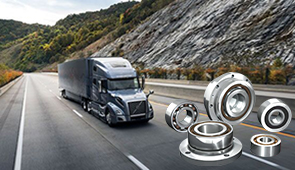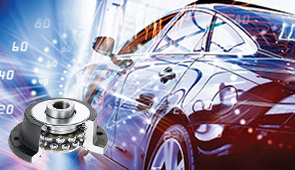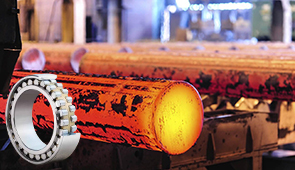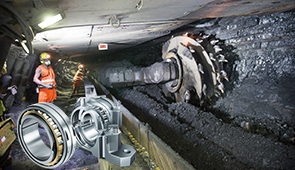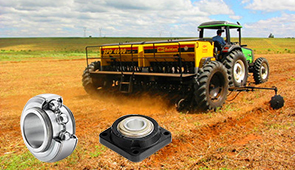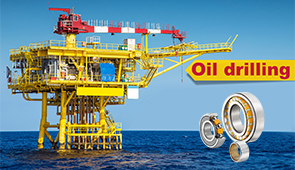The Complete Guide to Rod Ends with Bearings: Understanding Their Role and Benefits in Various Applications
Rod ends with bearings are essential components in numerous mechanical systems, offering a versatile and efficient solution for transmitting motion and managing misalignment between connected parts. Their unique design, which combines a ball bearing with a housing, allows for smooth rotational and oscillatory movement, making them invaluable across industries such as automotive, aerospace, agriculture, and industrial machinery. This guide is designed to provide an in-depth exploration of rod ends with bearings, breaking down their structure, functionality, and the critical role they play in ensuring optimal system performance. Whether you’re an engineer seeking technical insights or a decision-maker evaluating their application potential, this article delivers the information you need to make informed decisions about incorporating these components into your projects.
What is a Rod End and How Does It Work?
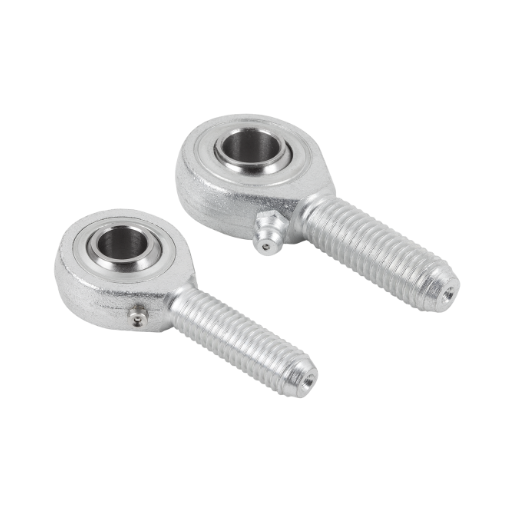
Understanding the Rod End Bearing Mechanism
Rod ends, sometimes called heim joints or rose joints, are classified as articulating joints because they connect mechanisms in such a way that motion is transferred while accommodating for angular misalignment. They typically consist of a spherical plain bearing within a threaded nut. This arrangement permits the rod end to swivel and pivot about multiple axes, thus offering greater flexibility in systems that require strong linkages and considerable dynamic motion.
The rod end bearing mechanism functions by bearing loads on its spherical bearing, which allows for smooth revolving or oscillating movement. The interface is spherical, allowing for uniform load along the interface and avoiding high concentration stress, which leads to wear and fatigue. Commonly used materials in the construction of rod ends, like stainless steel or alloy steel, enhance strength and resistance towards corrosion, making them ideal in harsh conditions such as automotive suspensions, industrial machinery, and aerospace components.
The purpose of a rod end is determined by the ability to carry high loads while allowing for a large range of motion. Optimization of system performance and reliability is possible with the right combination of thread size, bearing materials, and load ratings. Sustained proper lubrication and maintenance ensures operational lifespan, enabling these components to uninterrupted serve as vital links in mechanical systems.
Exploring the Spherical Design of Rod Ends
Also known as spherical rod ends, the rod ends possess a spherical design that serves as a cornerstone to their efficiency. Primarily, this is due to the enabling a higher range of motion, whilst still being able to tackle forceful stress loads. A spherical bearing is present in the rod ends which permits movement over multiple axes which proves to be helpful in realigning applications that require alterations to be done often through rotational, as well as angular motion and is important in automotive suspension systems and controls of aircrafts.
Spherical bearings are specially designed to provide flexibility while trying to maintain strength. To balance the two functions, these bearings are usually made using steel or stainless steel as they offer high value in terms of fatigue resistance and repeatedly enduring stress. Along with these self-lubricating features, they can also be coated in low-friction PTFE (polytetrafluoroethylene), which improves their performance by preventing wear and reducing manual maintenance. Such perks make rod ends perfect for harsh conditions that face frequent changes in movement.
When designing and applying these components, alignment, load direction, and operating conditions must be taken into account. The rod end selection must be appropriate to the load conditions imposed on the system, both static and dynamic, within the specified temperature limits and contamination possibilities. Well designed spherical rod ends will, in combination with other interfaces, enhance the operational effectiveness and efficiency, dependability, safety, and simultaneously maintain the integrity of the mechanical systems, proving their significance in contemporary engineering systems.
How Rod End Bearings Facilitate Motion
Rod end bearings enable movement by efficiently handling angular misalignment and rotation in mechanisms. They comprise a spherical bearing placed in a housing that allows the bearing to pivot, which makes rod end bearings permit the connection of moving parts with necessary multi-degree freedom. This makes rod end bearings advantageous in cases where components experience vibrations, oscillations, or realignments.
Rod end bearings’ functions primarily deal with the transfer of loads smoothly while reducing the stress on components. Permitting some angular movement, these bearings mitigate the effects of misalignment wear. Furthermore, they remain pivotal in the management of friction, ensuring constant performance irrespective of load conditions, static or dynamic. Their importance escalates in cases like steering linkages in automotive vehicles, hydraulic cylinders, and industrial machines, which require precision in movement and handling of different loads.
In addition, durability and corrosion resistance, lubrication, and mechanical wear are some of the properties these bearings exhibit due to protective coatings and materials used. Depending on the application, rod end bearings can be fabricated from a variety of materials, including steel, stainless steel, and composite materials, to optimize performance. This highlights the importance of rod end bearings in modern engineering, where motion precision and advanced alignment techniques are critical to system reliability and maintenance.
Types of Rod Ends: Which One is Right for You?
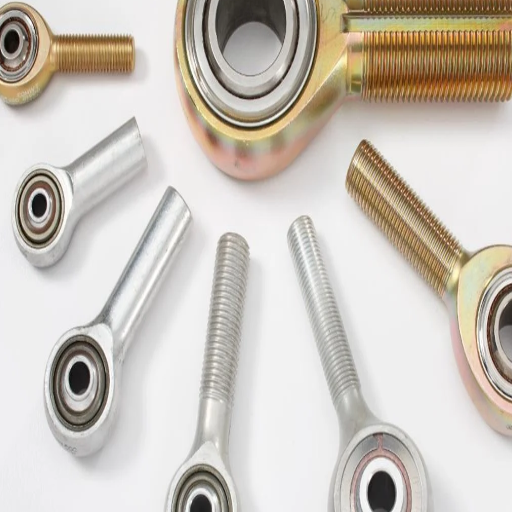
Comparing Spherical Bearings and Plain Bearings
Unlike plain bearings, which are less expensive and suited for simpler applications with low to moderate load capacities, spherical bearings show exceptional performance in accommodating heavy loads and multi-axis misalignment.
| Aspect | Spherical Bearings | Plain Bearings |
|---|---|---|
|
Capacity |
High |
Moderate |
|
Flexibility |
Excellent |
Limited |
|
Upkeep |
Low |
Moderate |
|
Lifespan |
High |
Moderate |
|
Size |
Compact |
Larger |
|
Sound |
Quiet |
Moderate |
|
Expense |
Higher |
Lower |
|
Usage |
Heavy-duty |
General |
Advantages of Metric vs. Inch Rod Ends
As with any component, when choosing metric or inch rod ends, observe their compatibility, performance, and sustainability metrics for the project’s goals. Rod ends are categorized as metric per unit and region because their dimensions are designed to be rod end compatible with the SI system. They are found in global applications, which ensure standardization and interchangeability within industries that have merged under the metric system. In addition, cross-border project collaboration is made easier through the precast manufacturing of assembly components on metric rod ends, which smoothens assembly procedures.
Imperial units are those which inch rod ends belong to, which explains their prevalence in the aerospace and conventional US machinery industries. These rod ends are best suited with pre-existing equipment as they ensure compatibility with legacy systems, making them the go to option for refurbishing sets or maintenance tools tailored to aged inch cased machinery.
Bear in mind that modern engineering environments tend to integrate metric rod ends more easily, while inch rod ends allow for seamless continuity in systems with older imperial designs. Between the two options, dominant regional factors, existing design requirements, and shifted system context dictate specifications’ focus on implementational purpose. From a global perspective, the supply chain availability of replacement metric parts in Si-dominated logistical and manufacturing environments makes rod ends the clear choice, but only in environments where metric measurements are used.
Choosing Between Steel and Other Materials
Most designers will still go for steel when deciding what material to use for rod ends or other similar parts because of its strength, durability, and high resistance to mechanical changes under extreme loads. But with new research and science, there is now a range of different options available like aluminum, titanium, and even composite materials which provide their own benefits and drawbacks.
Alloy steel and stainless steel are also among the most widely used materials, especially for parts under extreme load conditions, because of their superior tensile strength and wear resistance properties. Meanwhile, aluminum offers a lighter option, which provides a huge advantage in the aerospace and automotive industries where every bit of weight matters. Despite steel featuring a higher strength-to-weight ratio, engineered aluminum alloys offer a good compromise between strength and durability.
Even though titanium is more costly, it’s stronger than steel and lighter than aluminum. It is also highly resistant to corrosion which makes it suitable for marine and medical use. On the other hand, light yet stiff high tech materials such as carbon fiber reinforced polymers composites are expensive and require specific manufacturing processes which makes them suitable for very few industries.
Considerations during the selection procedure, from operational tasks to the environment and from financial costs to resources, should always be included. When evaluating materials, techniques such as supply chain management, sustainability, and even enduring maintenance requirements need to be considered from the standpoint of hardness, ductility, thermodynamic stability, and fatigue. Comprehensive comparisons enable engineers and designers to make mechanically sound selections.
Key Features of Rod End Bearings
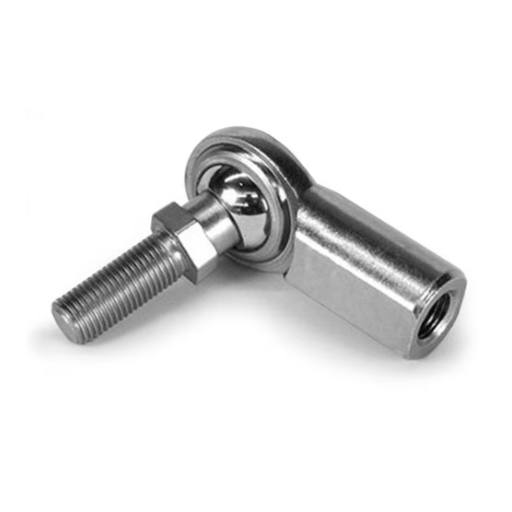
Importance of Precision and Performance
In machinery, the precision and performance have always been linked to the rod end bearings’ functionality, as whittled down metrics heavily impact operational efficacy as well as bearing longevity. Bearings of the said type are best fitted when motion or force needs to be transmitted across a misalignment. Be it couplings or control rods, the load transmission while ensuring a subtle degree of stability cannot be overlooked. For maximum strength and wear resistance, advanced surface treatments on chromoly and stainless steel are done due to stringent tolerances that need to be met.
Industries rely on rotating machinery for secondary operations; hence per bearing reliability plays a role in performance throughout a set task. Rotating devices require high precision self-lubricating components with a set friction coefficient and limits on rotation endurance. Moreover, the bearing segment also becomes maintenance-free during lower maintenance rounds and spaces further preserving operational reliability. Supplemental ribbing helps in extending the separator and bearing’s lifespan, resulting in a machine element that enables reduced periphery maintenance.
Thanks to the appreciation in material science, engineering analytics merged with in-situ measurement, modern rod end bearings provide dynamic performance advantages. Utilizing the markings from reconstruction Finite Element Analysis (FEA) and real-time experimentations for modular in-session adjustment as shaping the sophisticated requirements of today’s tech, cutting-edge machines maintain a hold on precision under stress.
The Role of Self-Lubricating PTFE Liners
In self-lubricating PTFE (Polytetrafluoroethylene) liners, we find a critical addition that increases the performance and lifespan of rod end bearings. As a result of low friction and wear, these liners are especially useful in high-load and high-motion operations. Here are five detailed advantages and applications of self-lubricating PTFE liners:
- Low Friction Coefficient
The use of PTFE liners in aerospace and automotive industries is ever-growing as they possess an extremely low coefficient of friction and thus, require lesser energy to set them in motion.
- Wear Resistance
Self-lubricating liners reduce the required maintenance to be done – unlike their traditional counterparts which need frequent tuning. Many manufacturers nowadays claim operational life to the tune of 50% longer by claiming reduced wear out in extensive use.
- Maintenance Free Operation
Liners like these are especially useful in remote drills as they technically self-lubricate and do not need manual lubrication, which effectively reduces maintenance costs.
- Thermal Stability
PTFE liners function best and retain the ability to produce reliable results in extreme and outer space environments, such as cryogenic systems and even during space exploration – with extreme temperature ranges between –200 degrees Celsius to 260 degrees Celsius.
- Resistant To Corrosion
The fact that PTFE does not react with the majority of corrosive agents makes it idealchemically ing for stern environments like chemical processing plants and marine applications. This endurance greatly aids the longevity and dependability of the system.
The addition of self-lubricating PTFE liners provides a cutting-edge solution that allows rod end bearings to perform for the most demanding requirements of contemporary engineering, thus demonstrating, once again, that materials science is crucial for operating at peak levels.
Understanding Misalignment and Self-Aligning Capabilities
Misalignment is a frequently encountered problem in mechanical systems which occurs when individual components are not properly aligned owing to fabrication tolerances, dynamic loads, or progressive operational wear. The ability of a machine to sustain these misalignments is equally important in terms of operational efficiency and stress relief for components.
Rod end bearings are designed to sustain angular misalignment owing to their self-aligning features. This is made possible through their spherical shape, as the ball and socket arrangement allows for rotation and angle adjustment. With these features, the application of forces on the several installed parts is controlled, so their harmful effects are concentrated in certain areas, which could lead to premature fracture or failure.
Often, high precision self-aligning rod ends are made out of corrosion resistant alloys and equipped with self-lubricating liners that increase self adjusting alignment accommodation but also durability under severe conditions like high loads and varying temperatures. These parts, by taking care of static misalignment and dynamic misalignments that develop while in use, enhance system reliability and efficiency considerably.
Applications of Rod End Bearings in Various Industries
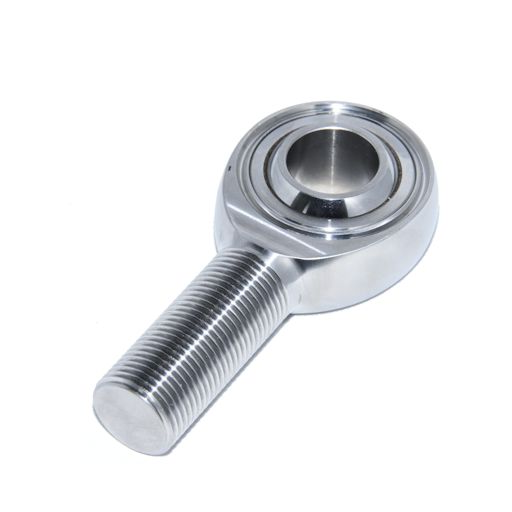
The Use of Rod Ends in Industrial Equipment
Rod End Bearings offer a sturdy and efficient way to control the motion of complex pieces of machinery – often found in industrial systems like conveyor belts and robotic arms. The precision motion capabilities enable enhanced flexibility and strength which increases operational efficiency.
Modern machining centers depend on rod ends to allow smooth angular movements of high load and stress components as well as rapid moving parts to minimize stress on other interconnected parts. Predictable performance from these components reduces wear and tear, and subsequently reduces downtime and maintenance costs. Rod ends equipped with self-lubricating materials can function in low-maintenance environments, greatly improving the longevity and performance of the entire system.
Advancements in material science and bearing technology allow rod ends to be tailored, making them capable of withstanding corrosive environments such as chemical manufacturing plants and offshore oil rigs. Incorporating corrosion-resistant coatings ensures industrial reliability even under extreme conditions. These rod ends serve the modern industrial operations by providing ga reat balance between durability, flexibility, and precision.
How Rod End Bearings Support Agricultural Machinery
For proper functioning and efficiency of agricultural machinery, rod end bearings are extremely important as they provide control over movement and rotational flexibility in difficult working conditions. These components are meant for load application at an angle and an angular offset, which is critical for tractors, harvesters, and plows where mechanical components undergo repetitive stress cycling. Their construction is robust to provide good performance under heavy loads and repetitive motions, which is critical to sustain productivity during long farming seasons.
Modern rod end bearings in agricultural applications often mandate no maintenance tasks, promoting equipment longevity with components featuring self-lubricating surfaces. Corrosion-resistant components are beneficial where there’s exposure to moisture, dirt, and chemicals, thus advanced materials like stainless steel or heat treated alloys are highly advantageous. Furthermore, these changes coupled with capability of withstanding extreme low or high temperatures makes the rod end bearings reliable on dry, hot, or humid, wet landscapes.
These bearings help maintain smooth relative motion between moving parts, while reducing friction and bearing a load in hydraulic systems and linkage assemblies. Implementing rod end bearings designed specifically for agricultural machinery allows manufacturers to further mechanize the equipment, thus increasing productivity and prolonging the equipment’s uptime due to reduced mechanical failures, saving costs in the long run. The advancement of such key components is essential to the new technologies for agriculture, which enormously highlights their importance.
Implementing Rod End Bearings in Automotive Linkages
Rod end bearings are critical to ensuring maximum efficiency and dependability in automotive linkage systems. This set of spherical, jointed bearings enables the components that are connected to sustain motion and loads accurately, even when there is a degree of misalignment. Automotive applications of this device are numerous; they include, but are not limited to, suspension systems, steering linkages, and throttle controls. All of these systems require the components to bear extremely high dynamic loads, strong vibrations, and temperature changes in addition to other environmental contaminants.
With the latest developments in material science and engineering, rod end bearings have become even more durable and perform better than ever. Protective coatings against corrosion, self-lubricating liners, and lightweight alloys are an example of emerging innovations that assure reliable performance under extreme demands. Industry statistics indicate that installation of advanced rod end bearings can lead to lower maintenance requirements by approximately 35 percent, thus, reducing operational downtime and costs linked to it.
Now more than ever, modern rod end bearings make it possible to perform precise control in sophisticated automotive systems, which enhances vehicle handling, safety, and efficiency. Their implementation demonstrates how the industry is increasingly focused on new ways to enhance performance and innovation smartly and effectively.
Installation and Maintenance of Rod End Bearings
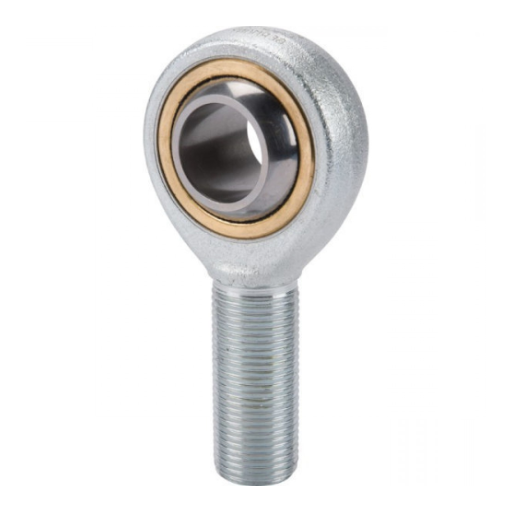
Step-by-Step Guide to Installation
- Examine The Components
Inspect the bearings and their components for any scratches, wear and tear, cracks, corrosion, or any application-related injuries, as they could result in device failure in the future. Check whether the bearing being used fulfills all necessary application specifications, since misalignment could fail at some point in time.
- Prepare The Mounting Area
To enhance performance, the part surface needs to be scrubbed free of any remaining attachments such as dirt, grease, or debris. An appropriate cleaning agent that does not affect material reliability should be used. An unobstructed surface is required for optimal performance and securing attachment.
- Align The Bearing
To ensure the concentration of load and accompanying force is evenly distributed, the rod bearing needs to be aligned properly with other assemblies. Adjust the bearing so that the centerline of the bore sits directly above the load path to retain full balance and prevent uneven wearing.
- Secure the Attachment
To prevent cross-threading, finger-tighten the rod end bearing first. Once in place, use a wrench or suitable tool to torque the bearing to the recommended value by the manufacturer. Any operational safety and longevity issues will arise due to either under-torquing or over-torquing.
- Install Necessary Locking Devices
As described in the system’s technical documentation, retaining clips, safety wires, and lock nuts can be utilized as locking devices to prevent loosening from vibration.
- Test for Range of Motion
With the rod end bearing fitted, evaluate its freedom of movement. The assembly should be rotated fully to its limits and back to verify no binding or friction, which should be lower than what would be considered excessive, emerging from normal use.
- Apply Lubrication
With some bearings having set requirements of lubrication, apply it if deemed necessary. Lubricating the components serves to lower resistance thereby hindering wear and increasing the lifespan of the bearing, while some do have self-lubrication features that would render added lubricant needless.
- System Testing Procedure
After the installation, it is imperative to conduct every component system test, ensuring proper integration of the rod-end bearing with the corresponding components, verifying function under intended load scenarios as well as specified environmental factors.
For the best performance, work life, and endurance of rod end bearings, they must be properly maintained with set interfaces monitored over time. Clear instructions provided by the manufacturer must be considered.
Best Practices for Maintenance and Longevity
A well-defined strategy encompassing all aspects of maintenance is critical, especially for rod end bearings. This strategy entails thorough lubrication first. To enhance lubrication, greases or oils specified by the manufacturer should be used while taking into account the usage conditions and frequency of use to ensure the appropriate bearing load, environment, and level of activity. Operating conditions like temperature, vibration, and load capacity must be monitored so that any friction or misalignment of the components is detected as early as possible.
Regular maintenance helps identify problematic areas such as corrosion and deformation which may exacerbate the wear and tear of the bearing. Special focus must be given to the spherical contact surface which is prone to severe wear. Cleaning should always be done using solvents that will cause the least material damage like those used to counteract corrosion. In applications with oscillating loads, real-time monitoring of critical performance parameters is recommended for precise load adjustments.
In closing, whichever, replace rod end bearings always in accordance with the manufacturer’s specified service intervals or immediately if major damage is noted. Ensures the continued reliability and safety of using genuine replacement parts that at least meet or exceed the required specifications. When used in conjunction with the prescribed installation and operational procedures, compliance with maintenance protocols improves bearing life and functionality under a wide range of operating conditions.
Troubleshooting Common Rod End Issues
Although bearing rod ends play an important role, both mechanically and kinematically within a system, their performance may deteriorate due to various operational factors. Below, certain common problems are explained along with possible solutions:
- Excessive Wear
This is the most frequently occurring form of wear and is particularly caused due to inadequate lubrication, abrasive contaminants, or other forms of misalignment during operation. Increasing the recommended grease or oil in the bearing enclosure should remedy this. In addition, check the environment for loose debris, which can lead to further abrasions. Seals or caps also protect from excessive outside contamination. Ensure that you periodically check the alignment about the angular load paths to verify that they don’t fall out of design specifications.
- Corrosion
Corrosion occurs mainly due to moisture, exposure to certain harsh chemicals, or extreme environmental conditions. For example, choosing the rod ends made of zinc plated stainless steel alloy can improve resistance against corrosive materials. Stopping certain compounds from evaporating into the environment can also considerably remove the chance of dew forming on the rod ends in use, increasing durability.
- Binding or Restricted Movement
Certain bearing housing arrangements wherein housing has undergone deformation along with the circumscribing parts could very well cause binding issues. Ensure proper functioning is maintained by motor checking bearing mounted components installed externally within the rod end to capture any external dimension that can shift closer or further from the rotation axis. If the predetermined disparity factors foster deformation, strive to realign the elements along it to restrain any further battering from the mechanical load.
- Fatigue Failures
As a result of cyclic loading beyond the predetermined boundaries of the design, cracks or fractures appear as fatigue failures. To avoid angiogenesis, ensure that the application load is lower than the bearing’s static and dynamic loads. Some types of Periodic non-destructive testing, like dye penetrant inspection, can reveal the early signs of fatigue.
- Noise and Vibration
Strange noises or vibrations often suggest problems such as rub- off, lack of lubrication, or some other symptom of parts’ nom functional operations. Inspect all assembly interfaces for looseness, as well as the surface. Vibration analysis for operational performance should be used, as well as diagnosing testing apparatus subject to the initial stage of wear.
It can be seen that ridding of these problems increases the operability, reliability, and overall life span of rod end bearings. Accurate diagnostics with planned maintenance strategies aid in averting system failure, and are used efficiently in harsh conditions.
Frequently Asked Questions (FAQ)
Q: What is a rod end with a bearing, and what role does it play in various applications?
A: A rod end with a bearing, often known as a spherical rod end, is a product that provides a pivotal connection between two components, allowing for movement in multiple directions. It is commonly used in applications requiring high performance and flexibility, such as automotive, aerospace, and industrial machinery.
Q: What types of rod ends with bearings are available in the market?
A: Rod ends with bearings come in a range of types, including two-piece rod ends and those with integral spherical inner rings. These can be either metal-to-metal or have a rubber lining, depending on the required application and desired level of vibration reduction.
Q: How does a spherical inner ring contribute to the functionality of a rod end?
A: The spherical inner ring in a rod end allows for smooth operation and movement in multiple planes. This design is essential for reducing vibration and ensuring the accuracy and efficiency of the connected components.
Q: What is the difference between a left-hand and a right-hand rod end?
A: A left-hand rod end has a thread that tightens in a counter-clockwise direction, whereas a right-hand rod end tightens clockwise. This distinction is crucial for applications where specific directional adjustments are required.
Q: Why might one choose a metal-to-metal rod end over a rubber-lined one?
A: Metal-to-metal rod ends are often chosen for their durability and capacity to handle high loads, making them practical for heavy-duty applications. In contrast, rubber-lined rod ends are used where reduced vibration and noise are priorities.
Q: What are some standard applications for rod ends with bearings?
A: Standard applications for rod ends with bearings include use in automotive suspension systems, industrial machinery, robotics, and aerospace technology, where they provide essential pivoting and sliding motions.
Q: Are there any optional features available for rod ends with bearings?
A: Yes, optional features for rod ends with bearings can include special coatings for corrosion resistance, clearance adjustments, and high-performance materials that enhance strength and longevity.
Q: How do rod ends with bearings contribute to the economical operation of machinery?
A: Rod ends with bearings contribute to economical operation by reducing wear and tear on connected components, minimizing maintenance needs, and optimizing the performance of machinery, thereby extending the lifespan of the equipment.
Q: Can rod ends with bearings be customized for specific applications?
A: Yes, rod ends with bearings can be customized in terms of size, thread type, and bearing material to meet the specific needs of different applications, ensuring optimal performance and compatibility with other components.
UCTH213-40J-300 with Setscrew(inch)
CNSORDERNO: Normal-duty(2)
TOGN: UCTH213-40J-300
SDI: B-R1/8
SD: 2 1/2
UCTH212-39J-300 with Setscrew(inch)
CNSORDERNO: Normal-duty(2)
TOGN: UCTH212-39J-300
SDI: B-R1/8
SD: 2 7/16
UCTH212-38J-300 with Setscrew(inch)
CNSORDERNO: Normal-duty(2)
TOGN: UCTH212-38J-300
SDI: B-R1/8
SD: 2 3/8
UCTH212-36J-300 with Setscrew(inch)
CNSORDERNO: Normal-duty(2)
TOGN: UCTH212-36J-300
SDI: B-R1/8
SD: 2 1/4
UCTH211-35J-300 with Setscrew(inch)
CNSORDERNO: Normal-duty(2)
TOGN: UCTH211-35J-300
SDI: B-R1/8
SD: 2 3/16
UCTH211-34J-300 with Setscrew(inch)
CNSORDERNO: Normal-duty(2)
TOGN: UCTH211-34J-300
SDI: B-R1/8
SD: 2 1/8










